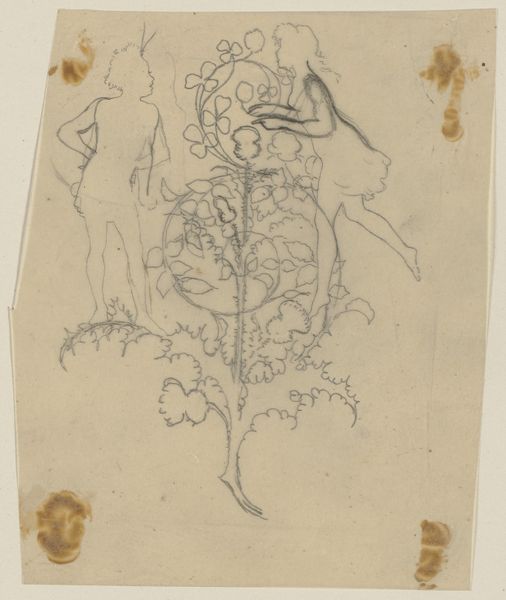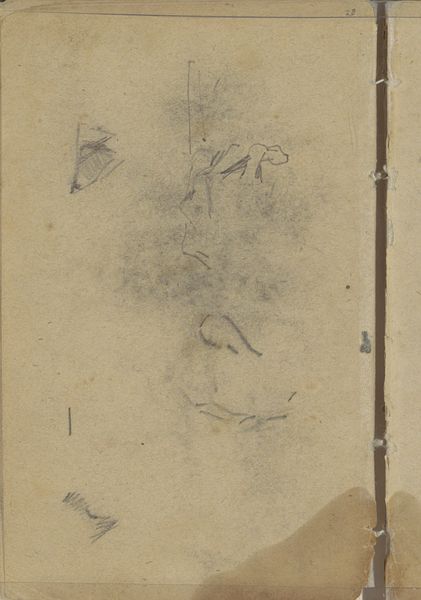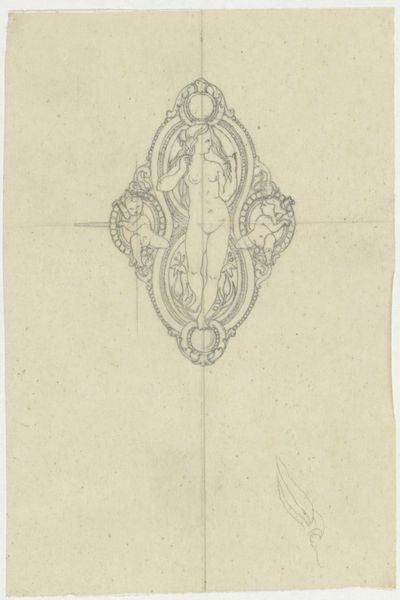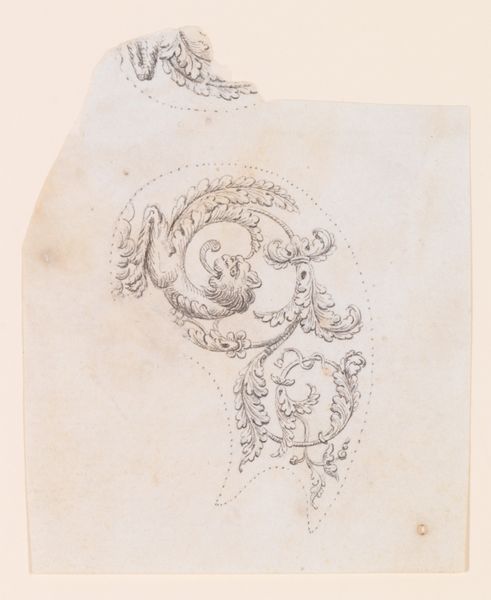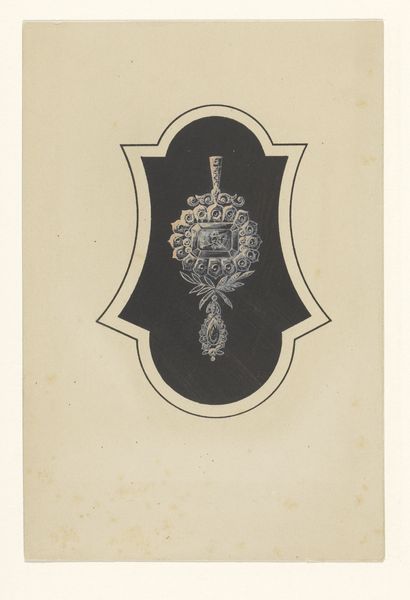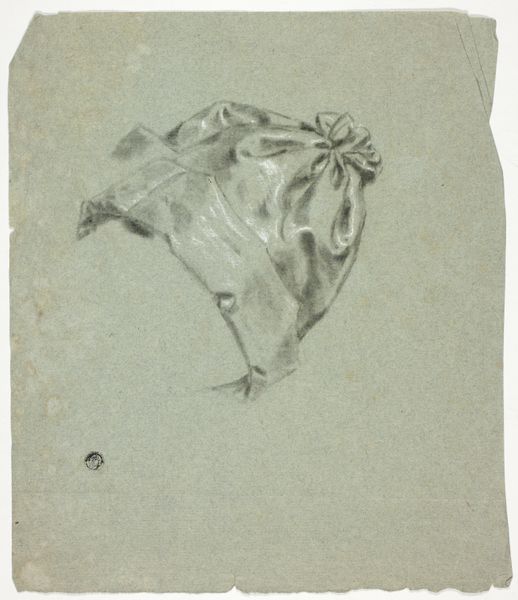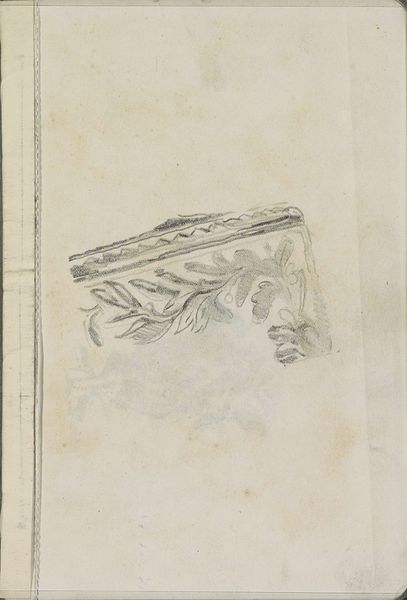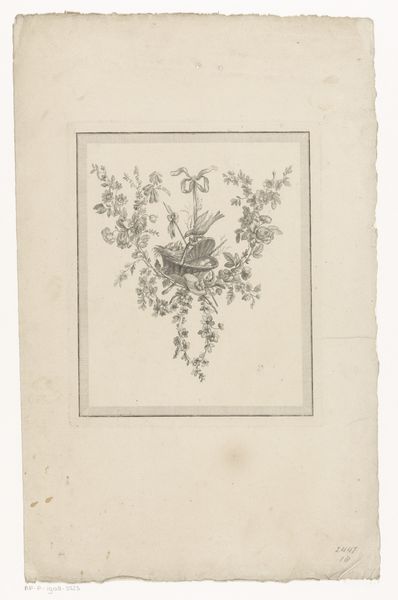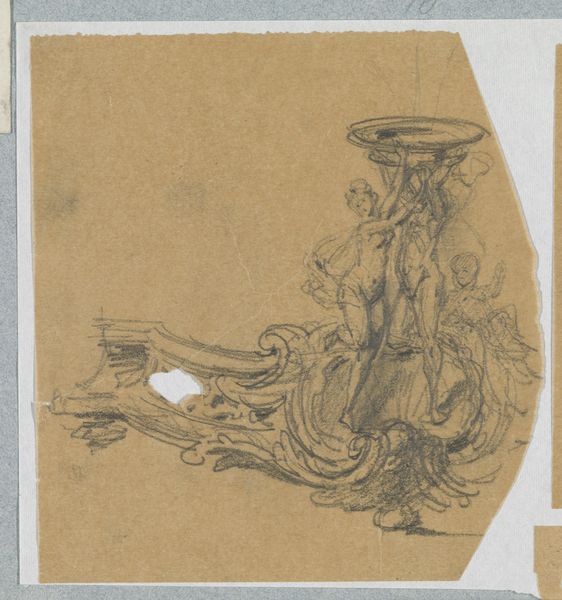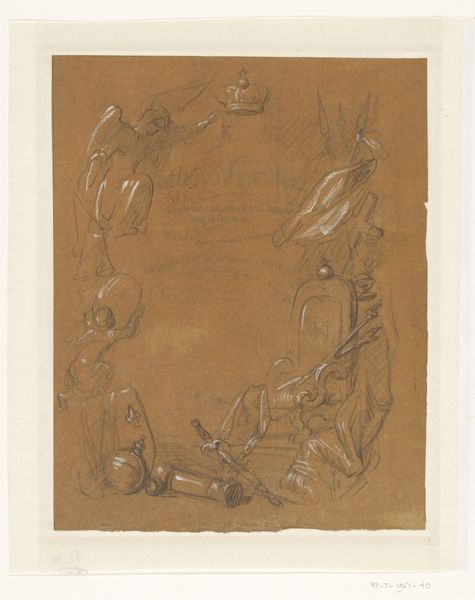
drawing, paper, pencil
#
portrait
#
drawing
#
water colours
#
paper
#
romanticism
#
pencil
#
watercolor
Dimensions: height 169 mm, width 214 mm
Copyright: Rijks Museum: Open Domain
Editor: Here we have "Kazuifel" by Firma Feuchère, dating from around 1830 to 1850. It’s a drawing on paper, using pencil and watercolors. I'm immediately drawn to the intricate details of what seems to be an ornamental chest plate. What stands out to you in terms of its historical context? Curator: Well, first it's important to note that "Kazuifel" is Dutch for "chasuble" which is a liturgical vestment worn by priests during mass. Considering it was made around the mid-19th century, a time of burgeoning Romanticism and increasing interest in medieval aesthetics, this drawing represents more than just a piece of clothing; it reflects a cultural and religious revival. This garment becomes a signifier, associating the wearer with traditional power, a link the church was eager to maintain during times of rapid change. Editor: That’s fascinating. So it’s less about the fabric itself, and more about what it represents in the broader socio-political landscape? Curator: Exactly. The design suggests an aspiration towards idealized historical periods, subtly reinforcing the church's authority through visual connection to the past. Given the increasing secularism, such display became a vital symbolic tool. Can you see elements that might particularly resonate with the viewers of the time? Editor: Perhaps the intense detail in the drawing itself? The artist seems to meticulously capture every scroll and flourish. It’s a testament to craftsmanship, connecting the viewer to something enduring and well-established. Curator: Precisely. Its very existence preserved in paper, water colors, and pencil, points to a culture of documentation, and the perceived need to safeguard this form of symbolic authority against the erosion of modern progress. A subtle, yet powerful statement. Editor: This has really reshaped my view. It’s much more than just a drawing of religious clothing. I hadn’t thought of the political messaging involved in its creation and display. Curator: That’s the beauty of understanding art in its historical context!
Comments
No comments
Be the first to comment and join the conversation on the ultimate creative platform.
